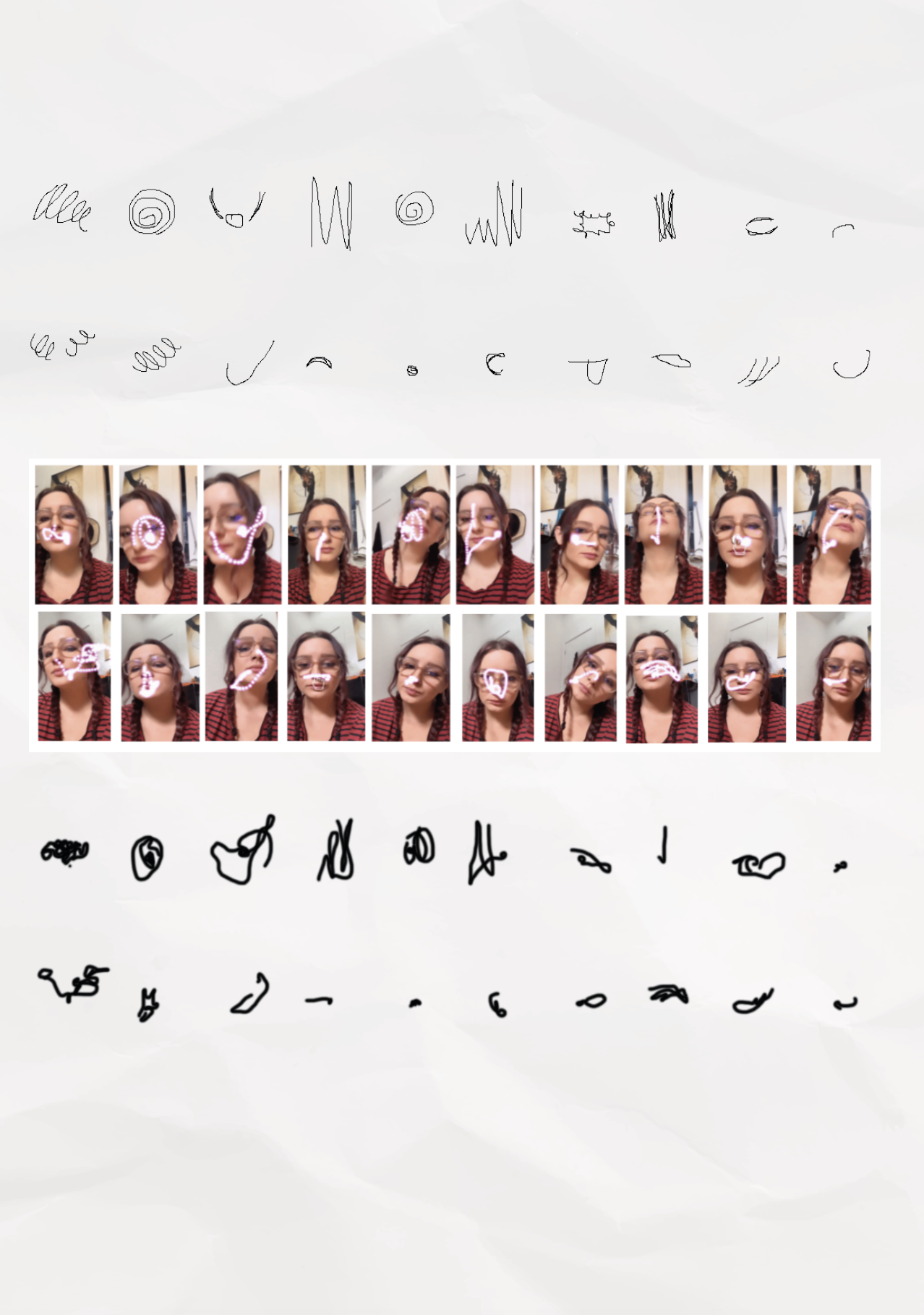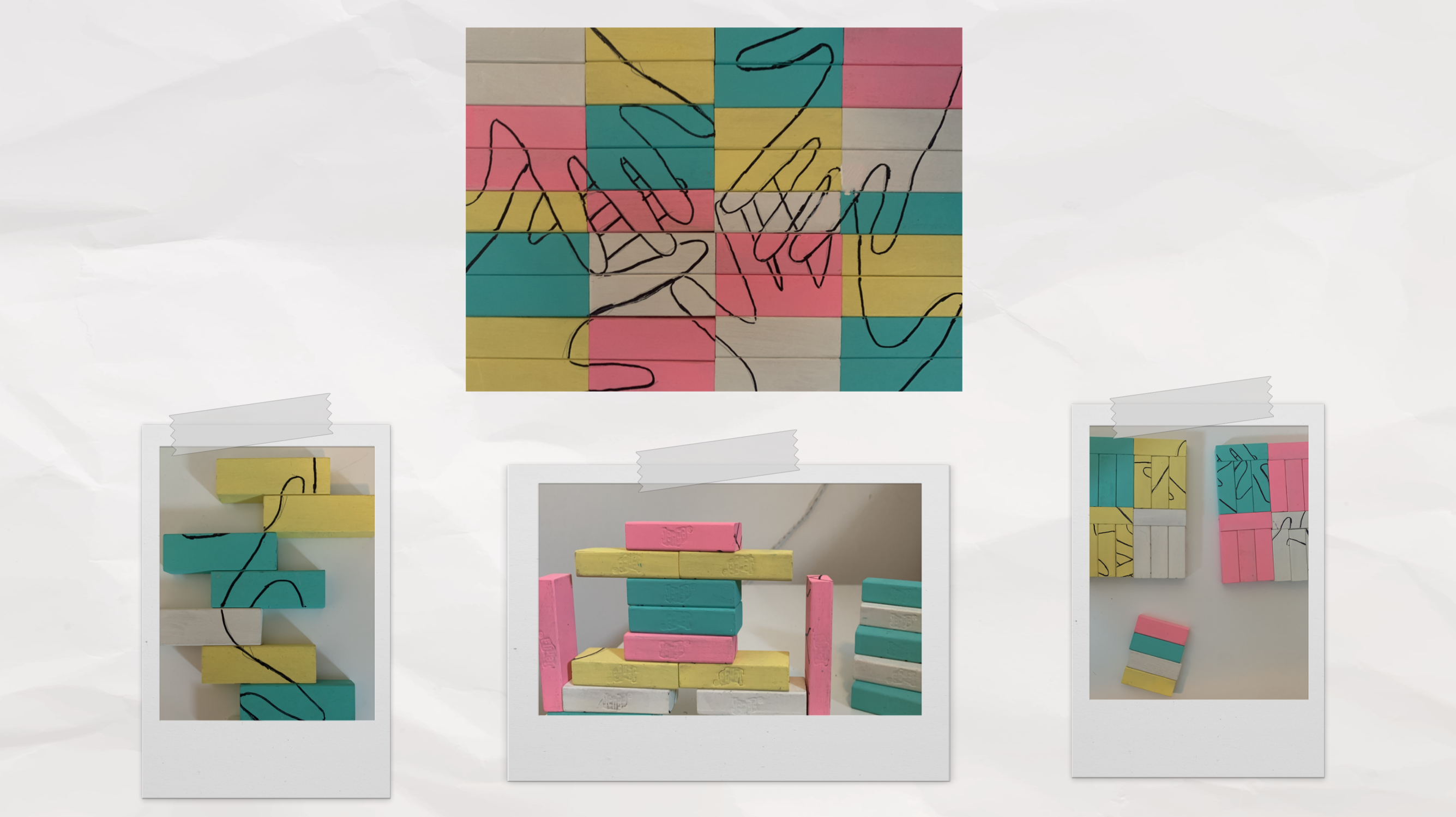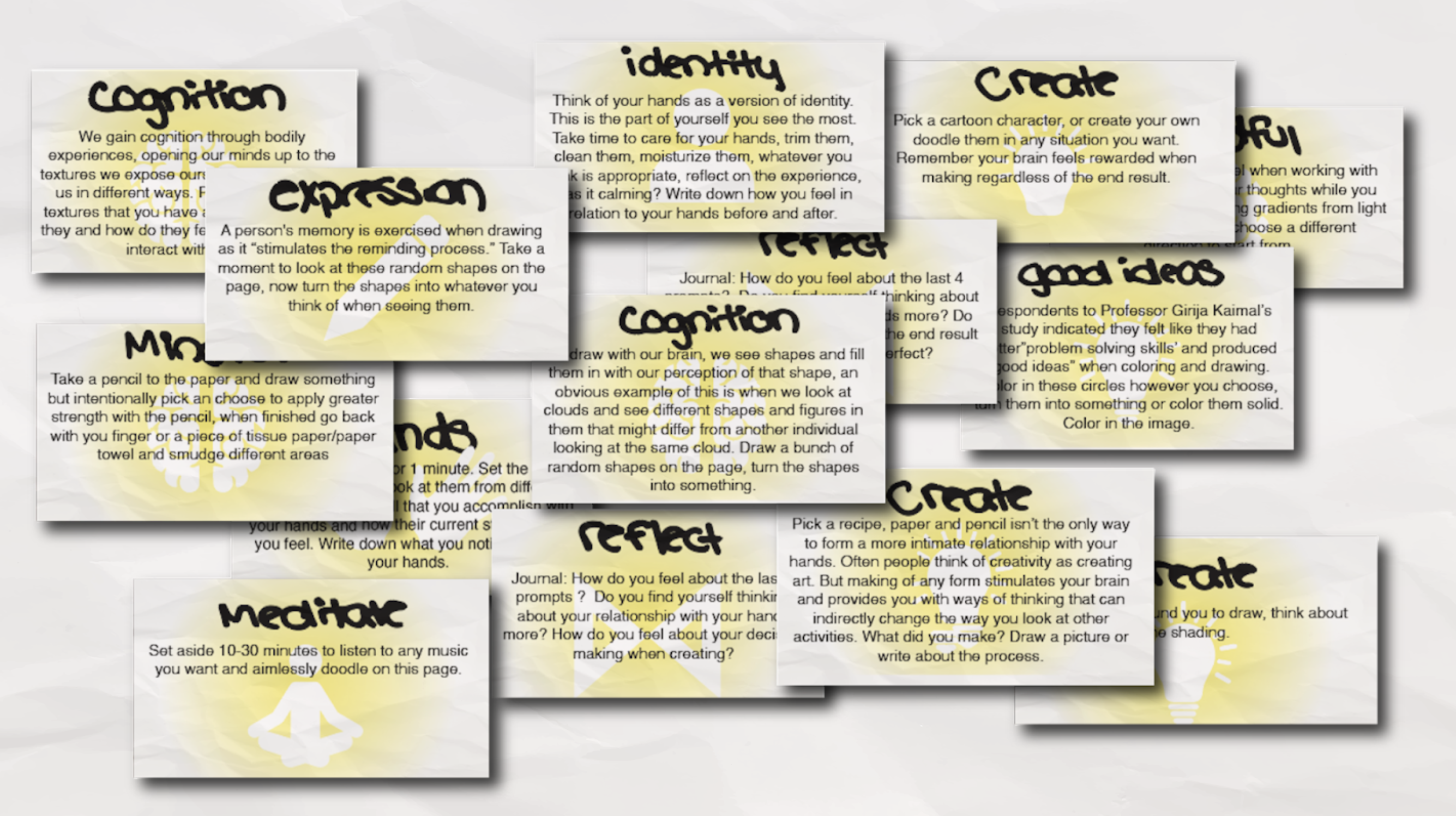Hand Crafted Thinking
Chelsea Hunter
As the world continues to change and develop we’ve begun to progress more towards artificial intelligence to supply us with efficient outcomes. Younger designers are beginning to think that they just don’t think or work on paper or with their hands. While digital technologies may supply us with tools of efficiency, our hands offer a distinct kind of productivity. Working physically with our hands stimulates our brain differently than navigating an interface or digital device, and as a result we form different relationships with ourselves and the things we create. By not pursuing tangible skills and experiences and relying solely on digital tools the next generation of designers may miss out on working our brains and creativity to its full potential.
Hands Are Our Introduction To the World

What does our relationship with our hands look like?
I sent out a simple task to a group of people asking them to send pictures of actions in which they eliminate the tool but use their hands to perform the gesture. In this way, I was able to visualize the myriad of ways our hands act as tools in our everyday lives. From ripping their food apart to applying makeup without brushes, people's responses began to suggest a taxonomy of gestures. I categorized them accordingly: we use our hands to nurture ourselves, to perform acts of security, to build the environments we live in, and to provide self care. With little fanfare in contemporary mainstream society, our hands build, create and contribute to every aspect of our lives.
Looking at hands as Identity
After categorizing the responses I received from my probe I began to think about the motions and gestures our hands create when completing these tasks. I then roughly sketched out the gestures and used a facial recognition app to try to recreate them. This was my way our showing the control we have over our hands vs our faces and how they are a better and more intimate representation of ourselves.
Thinking with our hands
I created this puzzle with the intention of studying how people think when working with their hands. Though I created a pattern this was never shared with the participants because their goal was not achieving the image I created, but instead to look at the blocks abstractly and create whatever came intuitively to them. So what can we tell about each participant's way of thinking? From the results I was able to see some users thought more about the lines and creating organic shapes with them rather than the actual blocks. Other participants were more interested in the overall shape and organization and creating their own patterns, some wanted to build a structure, and lastly some users saw it as a challenge to try to figure out what my original design was!
Challenging people to connect with their hands
My capstone took form as an interactive journal experience. Participants were given a journal, along with an envelope of prompts that challenge them to reconnect with their hands and form a relationship with their creative side. I wanted them to not only connect with their hands but connect with the tactility of the journal. With certain design decisions, I was able to force the user to have these extra layers of interaction. For example I made the prompts to be picked out of an envelope along with giving them paper clips to attach them to the pages they complete the prompts on. This not only had them interact with each page beyond the prompt but also made their journey something they could physically feel and see with each prompt the journal would get thicker. When each participant opened their journal the first page had an envelope that contained a handwritten letter from me talking about the journal to help them begin their journey mindful of what they were gaining.
The prompts
Each prompt had a small explanation of the different things we gain from tactile skills. Some prompts targeted connecting with their hands off paper while others encouraged a more artistic route of creativity.